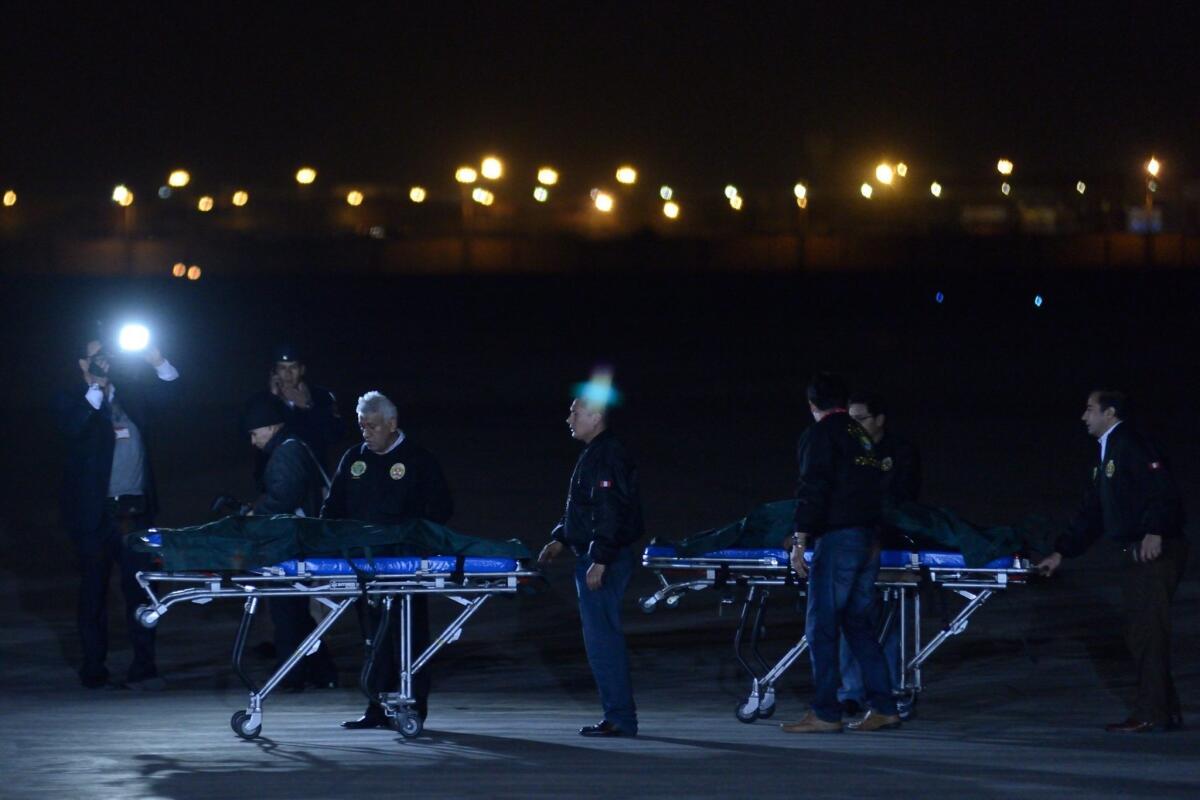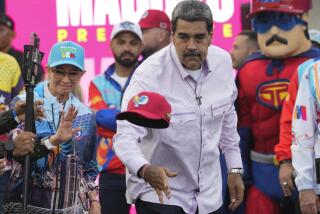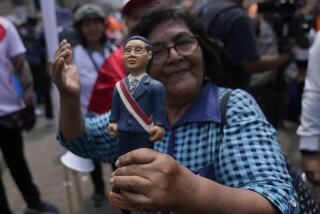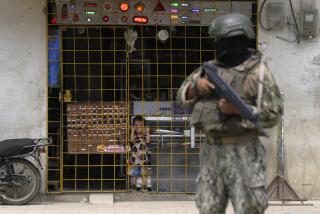Peru commandos kill two Shining Path leaders

LIMA, Peru -- The killing in southern Peru of the two top military commanders of the Maoist rebel group Shining Path, which has reemerged as a major trafficker of narcotics, may force it to reorganize, analysts and officials say.
Alejandro Borda Casafranca, alias “Alipio,” and Martin Quispe Palomino, alias “Gabriel,” were killed Sunday night by a covert force formed to track down top rebel leaders.
After a firefight, their bullet-riddled and burned corpses were found in a house in an isolated township of Ayacucho state south of Lima. The body of a third suspected rebel has not been identified.
Terrorism and security analyst Jaime Antezana said Tuesday that the killing of the two rebel leaders was the government’s first successful blow in recent years at the top military ranks of the group, known in Spanish as Sendero Luminoso.
Antezana said the two men were deeply involved in the rebels’ management of coca leaf cultivation, as well as the processing and transport of cocaine.
“It’s important because it’s the first blow to the leadership,” Antezana said of the rebels’ military branch. “Alipio was the principal commander of this organization.” The military branch was more dedicated to drug trafficking than ideology, and apt to hire out independently to drug trafficking gangs, he said.
Peru has retaken the lead from Colombia in coca cultivation and cocaine production, according to last year’s survey by the United Nations Office on Drugs and Crime. Shining Path is thought to play a key role in the protection of coca crops as well as in the refining and transport of processed cocaine in the valleys of the Apurimac, Ene and Monzon rivers in southeastern Peru.
Peruvian President Ollanta Humala said Monday that the killings were a major military accomplishment and would cause a “recomposition of this terrorist group” thought to number no more than 500 fighters.
The special force that killed the two leaders was also instrumental in the capture of one of the group’s political leaders, known by the alias “Artemio,” last year.
Sendero Luminoso launched its violent operations in 1980 as a Maoist insurgent force. Appealing to neglected poor and indigenous communities, it took control of vast swathes of Peru’s rural regions and some urban areas by the early 1990s, raising fears in the U.S. government that it might someday take power.
But its charismatic founder, former philosophy professor Abimael Guzman, was captured in 1992 and subsequently sentenced to life in prison. The rebel force quickly dissipated.
The reappearance of the group and of cocaine trafficking in Peru has been of particular worry to U.S. military and counter-narcotics officials, as is the scarcity of U.S. aid available to assist the Peruvians in fighting traffickers.
While Colombia has received hundreds of millions of dollars in military aid over the last decade to fight leftist rebels and drug traffickers, Peru this year will receive about $6 million in direct aid from the Defense Department, officials say.
Much of the cocaine produced in Peru is shipped to expanding markets in Brazil and Argentina. Some of that is then sent to Europe and the Middle East, officials have said. Most of the U.S. demand for cocaine still is supplied by Colombia.
[For the Record, 7:12 p.m. Aug. 15: An earlier version of this post misstated the first name of Alejandro Borda Casafranca as Orlando.]
ALSO:
Egyptian police clash anew with Morsi supporters
Mexican president calls for opening Pemex to foreign investment
West largely rejecting calls for Olympic boycott over Russia anti-gay law
Special correspondent Leon reported from Lima, Peru, and special correspondent Kraul reported from Bogota, Colombia.
More to Read
Sign up for Essential California
The most important California stories and recommendations in your inbox every morning.
You may occasionally receive promotional content from the Los Angeles Times.









